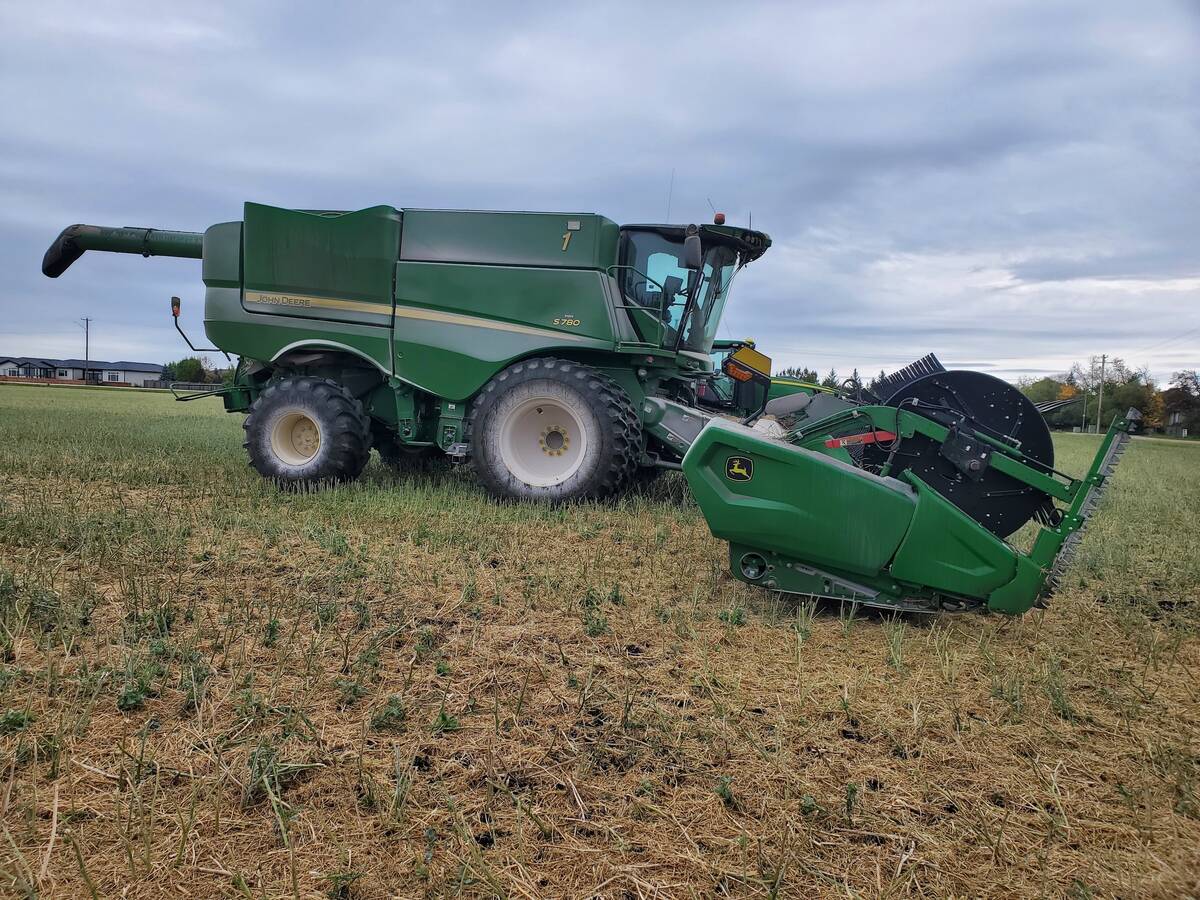The American pulse industry is disappointed with the loan rates the
United States Department of Agriculture announced it will pay on the
2002 pulse crop, but Canadian growers are relieved.
This is the first time pulse crops have been covered under the USDA’s
marketing loan program and American and Canadian growers had been
anxiously awaiting the USDA announcement.
The rates essentially set a floor price for peas, lentils and small
chickpeas. Canadian growers were worried that high loan rates would
Read Also

Powdery mildew can be combine fire risk
Dust from powdery mildew can cause fires in combines.
drive up U.S. seeded acreage, which would have a damping effect on
prices.
But the rates announced Sept. 3 won’t do that, said Paul Thomas,
executive director of the North Dakota Pea and Lentil Association.
“The net effect that we’re going to see from this is virtually no
safety net at all.”
The USDA has established rates of $11.94 US per 100 pounds for lentils,
$7.56 for small chickpeas and $6.33 for dry peas.
Those are the exact rates the American pulse industry asked for and
that the U.S. Congress passed in its new farm bill legislation.
But the USDA’s rates are for the top grade of peas, lentils and small
chickpeas. What the industry wanted was those same rates for No. 3
quality lentils, chickpeas and feed peas.
“The way they implemented this program actually has the potential to be
detrimental to the industry rather than helpful,” said Thomas.
He said the USDA looked at the past three years of prices and
determined that the loan rates passed by Congress reflected No. 1
quality values. But Thomas said pulses were at their lowest price level
in history during that stretch.
Discounts have been established for crops that grade lower than No. 1.
For lentils, those discounts are 75 cents per 100 lb. for No. 2, $1.25
for No. 3 and $4 for sample grade.
For small chickpeas, the discounts are $1 for No. 2, $2.25 for No. 3
and $3.50 for sample. For peas, they are 50 cents off for No. 2, $1 for
No. 3 and $2.50 for sample.
Saskatchewan Pulse Growers executive director Garth Patterson is
relieved the rates aren’t higher, but said Canadian producers remain
philosophically opposed to the concept.
“We believe in the principal of open markets and farming on market
signals – supply and demand. We still feel this will distort (markets).”
Prices for pulse crops are going up this year due to production
problems in Canada, Australia and India, so the American loan rates
won’t be much of a factor. But they pose a long-term threat, said
Patterson.
He is particularly worried about the lentil rate of $11.94 per 100 lb.,
which amounts to $18.71 per 100 lb. at current exchange rates.
“Those loan rates are at a point where they could encourage U.S.
growers to move into small green and red lentils.”
Peas are a different story. Analysts with Stat Market Research say the
loan rate is below recent historical average bid levels for green and
yellow peas in the U.S.
Fears that American field pea plantings could expand from a few hundred
thousand acres to between three and five million acres within 10 years
now seem unfounded, said Stat analysts.
Thomas said the American pulse industry is going to pressure the USDA
to reconsider the loan rates, which are in effect for the first two
years of the new seven-year farm bill. Growers in North Dakota and
Washington have scheduled meetings with USDA representatives in October
to talk about their concerns.
“The USDA has said they are certainly open to discussions on changing
the way this program is being implemented,” said Thomas.
The industry is also working with a congressional delegation to draft
legislation that will require the USDA to apply the rates to No. 3
lentil and chickpeas and feed quality peas.

















